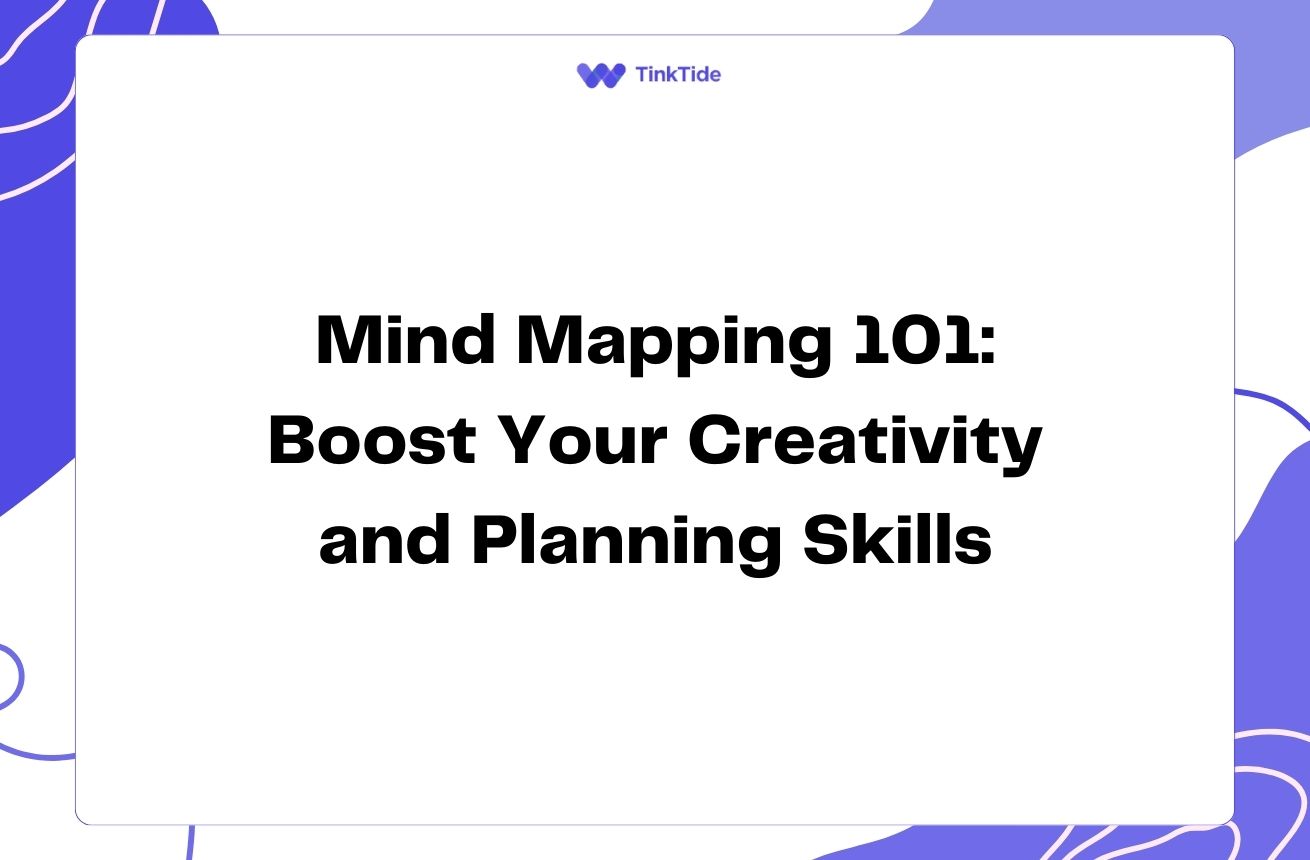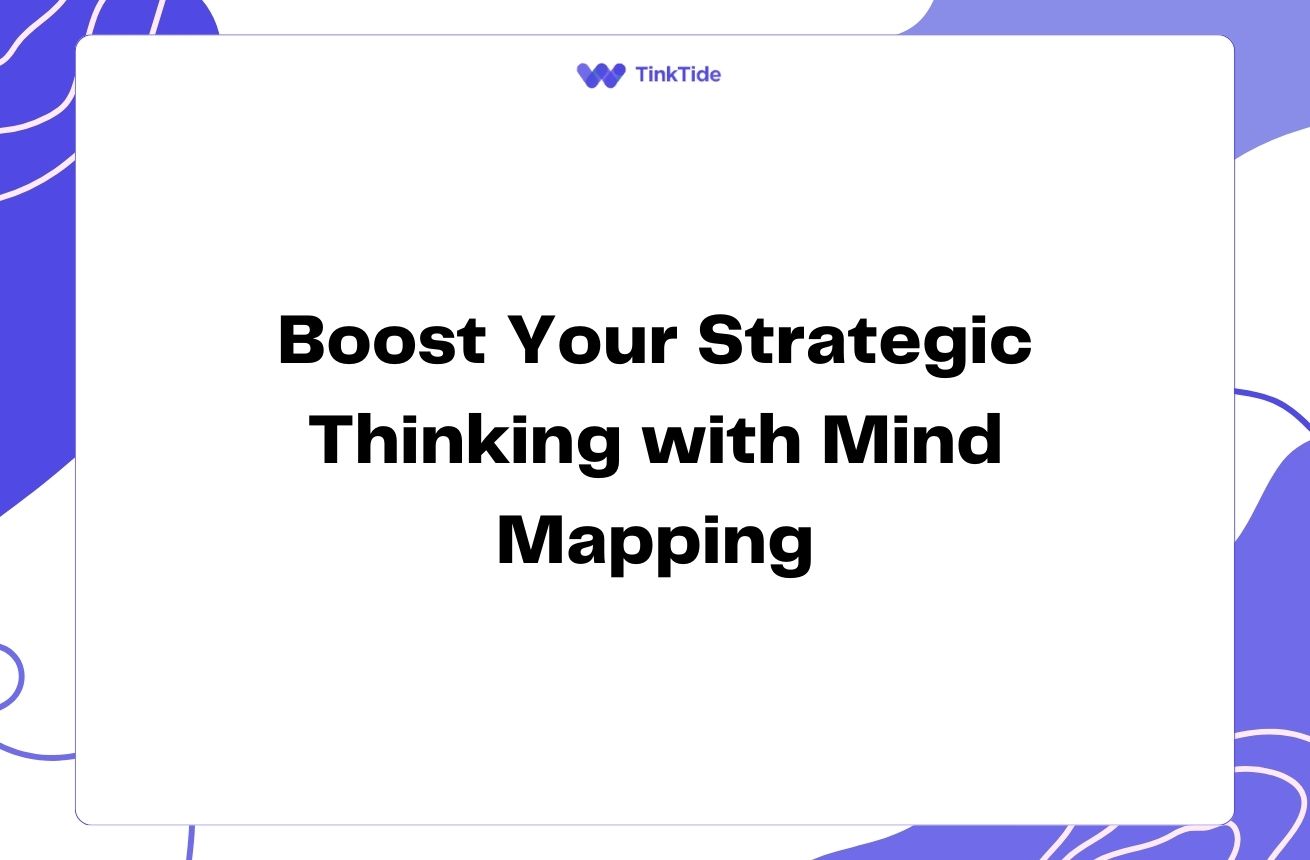Boost Your B2B Marketing with Mind Mapping Techniques
Understanding Mind Mapping in B2B Marketing
Mind mapping is a powerful visual thinking tool that can revolutionize your B2B marketing strategies. By creating a graphical representation of ideas and concepts, mind maps help marketers organize thoughts, brainstorm new ideas, and see connections that might otherwise be missed.
In the context of B2B marketing, mind maps can be used to plan campaigns, analyze target audiences, and develop content strategies. They provide a bird's-eye view of your marketing efforts, allowing you to spot gaps and opportunities more easily.
One of the key benefits of mind mapping for B2B marketers is its ability to foster creativity. By breaking down complex ideas into simpler, interconnected concepts, mind maps can help generate fresh perspectives and innovative solutions to marketing challenges.
To get started with mind mapping, you can use tools like MindMeister or XMind, which offer intuitive interfaces for creating digital mind maps.
Key Applications of Mind Mapping in B2B Marketing
Mind mapping can be applied to various aspects of B2B marketing. Here are some key areas where this technique can make a significant impact:
- Content Strategy Planning: Map out topics, themes, and content types for your B2B content marketing efforts.
- Customer Journey Mapping: Visualize the different touchpoints and experiences in your B2B customer's journey.
- Competitor Analysis: Create a comprehensive view of your competitors' strengths, weaknesses, and market positioning.
- Product Launch Planning: Organize all aspects of a new product launch, from messaging to distribution channels.
- Lead Generation Strategies: Brainstorm and organize various lead generation tactics and their interconnections.
Creating Effective Mind Maps for B2B Marketing
To create effective mind maps for your B2B marketing strategies, start with a central idea or goal. For example, if you're planning a content strategy, your central node might be 'Q4 Content Plan'.
From this central idea, branch out into main categories such as 'Blog Posts', 'Whitepapers', 'Case Studies', and 'Social Media Content'. Each of these branches can then be further expanded with specific topics, deadlines, or responsible team members.
Use colors and icons to make your mind map more visually appealing and easier to navigate. For instance, you might use green for completed tasks, yellow for in-progress items, and red for urgent priorities.
Remember to keep your mind map flexible. As your B2B marketing strategy evolves, you can easily add new branches or reorganize existing ones to reflect changes in your approach.
Enhancing Collaboration with Mind Maps
Mind maps are excellent tools for enhancing collaboration in B2B marketing teams. They provide a visual representation of ideas that can be easily shared and understood by all team members.
During brainstorming sessions, use a digital mind mapping tool that allows real-time collaboration. This enables team members to contribute ideas simultaneously, fostering a more dynamic and productive ideation process.
For project management, mind maps can serve as a central hub for tracking progress and assigning tasks. Tools like MindMeister allow you to attach files, add notes, and set task deadlines directly within the mind map.
By using mind maps as a collaborative tool, you can ensure that all team members have a clear understanding of the overall marketing strategy and their role within it.
Measuring and Optimizing with Mind Maps
Mind maps can also be valuable tools for measuring and optimizing your B2B marketing efforts. By creating a mind map of your key performance indicators (KPIs), you can visualize the relationships between different metrics and identify areas for improvement.
For example, you might create a mind map with 'Marketing ROI' as the central node. From there, you can branch out into categories like 'Lead Generation', 'Conversion Rates', and 'Customer Lifetime Value'. Each of these can be further expanded to show specific metrics and their current values.
As you track your performance over time, update your mind map to reflect changes. This visual representation can help you quickly spot trends and patterns that might not be as apparent in traditional spreadsheets or reports.
Use your performance mind map to guide optimization efforts. When you identify areas that need improvement, you can create new branches to brainstorm and plan optimization strategies.
Steps to Implement Mind Mapping in Your B2B Marketing
Ready to start using mind mapping in your B2B marketing efforts? Follow these steps:
- Step 1: Choose a mind mapping tool that suits your team's needs
- Step 2: Identify a specific marketing challenge or project to map out
- Step 3: Create your first mind map, starting with a central idea
- Step 4: Collaborate with your team to expand and refine the mind map
- Step 5: Use the mind map to guide your marketing actions and decisions
- Step 6: Regularly review and update your mind maps to reflect progress and changes
Overcoming Common Challenges
While mind mapping can greatly enhance your B2B marketing strategies, you may encounter some challenges when implementing this technique. One common issue is information overload – trying to include too much detail in a single mind map.
To address this, focus on creating multiple, interconnected mind maps rather than trying to fit everything into one. For example, you might have a high-level strategy mind map, with separate, more detailed mind maps for each major marketing initiative.
Another challenge can be getting team members to adopt the mind mapping approach. Overcome this by demonstrating the benefits through practical examples and encouraging experimentation with the technique in low-stakes situations.
Remember, the goal of mind mapping is to enhance clarity and creativity, not to complicate your processes. If a particular mind map isn't proving useful, don't hesitate to revise or discard it.
Address common questions
Here are some frequently asked questions about using mind mapping in B2B marketing:
How can mind mapping improve my B2B content strategy?
Mind mapping can help you visualize the relationships between different content topics, identify content gaps, and plan your content calendar more effectively. It allows you to see the big picture of your content strategy while also drilling down into specific details.
What's the best mind mapping software for B2B marketing teams?
The best software depends on your specific needs, but popular options include MindMeister, XMind, and Coggle. Look for features like real-time collaboration, integration with other tools you use, and the ability to attach files or add notes to nodes.
How often should I update my marketing mind maps?
It's a good practice to review and update your mind maps regularly, perhaps on a monthly or quarterly basis. However, for fast-moving projects or campaigns, you might need to update them more frequently. The key is to keep them current and relevant to your ongoing marketing efforts.
Can mind mapping help with B2B lead generation?
Absolutely. You can use mind maps to brainstorm lead generation tactics, map out lead nurturing workflows, or visualize your ideal customer profiles. This can help you identify new opportunities and optimize your lead generation strategies.
How can I convince my team to adopt mind mapping?
Start by demonstrating the benefits through a practical example relevant to your team's work. You could create a mind map for an upcoming project and show how it clarifies goals and responsibilities. Encourage team members to try it out for their individual tasks first, then gradually introduce it for collaborative work.
Provide additional resources
Mind Mapping for Marketers
A comprehensive guide to using mind maps in marketing
The Marketer's Guide to Mind Mapping
Tips and strategies for applying mind mapping to content marketing
Mind Mapping for B2B Sales
How to use mind mapping in B2B sales processes
Video: How to Mind Map
A beginner's guide to creating mind maps
Mind Mapping Templates for Marketing
Ready-to-use mind map templates for various marketing activities
Summarize key takeaways
Mind mapping is a powerful technique that can significantly enhance your B2B marketing strategies. By providing a visual representation of ideas and concepts, mind maps can improve creativity, planning, and execution across various marketing activities.
From content strategy planning to lead generation, customer journey mapping to performance optimization, mind maps offer a flexible and collaborative approach to tackling complex marketing challenges. By implementing mind mapping in your B2B marketing efforts, you can foster better team collaboration, identify new opportunities, and create more cohesive and effective marketing strategies.
Start small by applying mind mapping to a specific marketing project, and gradually expand its use as you and your team become more comfortable with the technique. Remember, the goal is to enhance clarity and creativity in your marketing efforts, so don't hesitate to adapt the mind mapping approach to best suit your team's needs.
Elevate Your B2B Marketing with Tinktide
Ready to take your B2B marketing to the next level? Try Tinktide's powerful marketing tools today.
Start Your Free Trial
